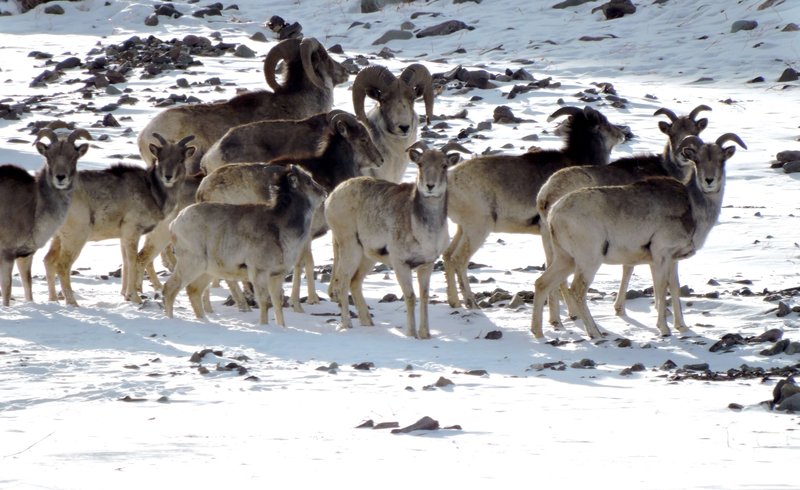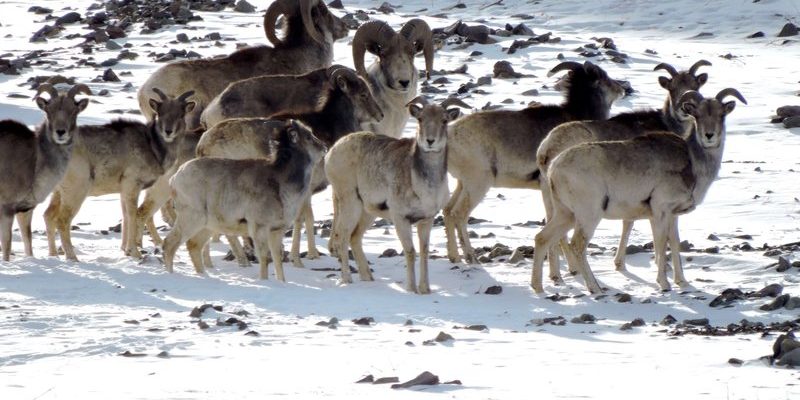
Argalis, with their impressive curved horns and hardy nature, are a symbol of high-altitude wildlife. They thrive in some of the most challenging terrains, and their presence influences everything from plant growth to predator dynamics. Let’s dive into the fascinating role the Argali plays in its ecosystem and why it matters for the health of its mountainous home.
What Is the Argali and Where Does It Live?
The Argali, scientifically known as *Ovis ammon*, is the largest wild sheep species in the world. These animals are native to the mountainous regions of Central and South Asia, particularly in Mongolia, Tibet, and parts of the Himalayas. They can weigh up to 400 pounds and stand over three feet tall at the shoulder. With their impressive physical features, including large, spiral horns that can grow more than three feet long, they’re designed for life in rugged terrain.
Argalis are highly social animals that form herds, typically consisting of females and their young. Males often roam alone or in small bachelor groups. They’re herbivores, primarily grazing on grasses, sedges, and shrubs found in their mountainous habitats. Their diet plays a crucial part in maintaining the health of the ecosystems they inhabit.
The Argali’s Role as a Grazer
Let’s take a closer look at how the Argali affects its environment. As grazers, these sheep play an essential role in shaping plant communities. By munching on grasses and shrubs, Argalis help control plant growth, which prevents overgrowth and promotes biodiversity. This grazing activity encourages a healthy balance of various plant species, allowing different types of vegetation to thrive.
Moreover, their grazing habits also influence the soil quality. When Argalis graze, they contribute to the cycling of nutrients back into the soil through their droppings. This natural fertilizer helps support the growth of plants, ensuring a vibrant ecosystem. Imagine a farmer rotating crops to keep the soil healthy—Argalis effectively do the same thing, just on a larger scale!
Impact on Plant Diversity
You might be wondering, how exactly does grazing lead to greater plant diversity? Well, when Argalis graze, they tend to prefer certain plants over others. This selective grazing allows less-favored plants to flourish, which creates a more diverse habitat. A variety of plants not only supports various animal species but also stabilizes the soil and reduces erosion.
This dynamic is essential, especially in mountainous regions, where soil erosion can lead to significant habitat loss. The Argali’s grazing effectively helps maintain a lush, healthy landscape that benefits all creatures living there.
The Argali and Predator-Prey Dynamics
In any ecosystem, predator-prey relationships are key to maintaining balance. Argalis are an important prey species for large predators like wolves and snow leopards. By serving as a food source for these predators, Argalis help regulate their populations. This natural check and balance is vital for the health of the entire ecosystem.
When predator populations are high, they may hunt more Argalis, which can in turn affect the grazing pressure on vegetation. Conversely, if Argali numbers decline too much, predator populations may also suffer due to a lack of food. It’s a complex dance of survival that highlights the interconnectedness of species in this mountainous ecosystem.
Adaptations to Avoid Predation
Argalis have developed impressive adaptations to evade predators. Their excellent sense of hearing and keen eyesight allow them to detect danger from far away. When threatened, they can sprint at high speeds across rugged terrain, making it difficult for predators to catch them.
Their ability to navigate steep cliffs and rocky outcrops gives them a significant advantage. Imagine trying to catch a skilled mountain climber on a steep slope—it’s not an easy task! These adaptations not only allow Argalis to survive but also keep their populations stable, ensuring their role in the ecosystem remains intact.
Argalis as Indicators of Ecosystem Health
You might not realize it, but Argalis can act as indicators of the health of their environment. Their population numbers and overall well-being reflect the condition of their habitat. If something is off—like a decline in food sources or an increase in predators—Argali populations may decrease too. This decline can signal to conservationists that something needs attention in the ecosystem.
For instance, if Argalis are struggling to find enough food, it might be a sign of overgrazing by livestock or climate change affecting plant growth. Monitoring Argali populations can help conservationists understand and address these broader environmental issues.
Conservation Efforts for Argalis
Recognizing the importance of Argalis, various conservation efforts are underway to protect their populations. Protected areas in their native habitats help safeguard these animals and their environment. Additionally, efforts to educate local communities about sustainable practices can promote coexistence between livestock herding and Argalis.
These initiatives not only help preserve the Argali but also protect the entire ecosystem they inhabit. By focusing on symbiotic relationships, conservationists can promote biodiversity and a healthy environment.
In conclusion, the Argali is more than just a magnificent creature roaming the rugged mountains of Central Asia; it plays a crucial role in maintaining the health of its ecosystem. From shaping plant communities through grazing to contributing to predator-prey dynamics, Argalis help sustain a balanced environment.
Understanding the Argali’s role aids in recognizing how intertwined all life forms are within their habitat. When we protect these animals, we’re also safeguarding the delicate web of connections that supports countless other species. So, the next time you think about these impressive mountain sheep, remember their significance in the wild and the importance of conserving their incredible ecosystems.

